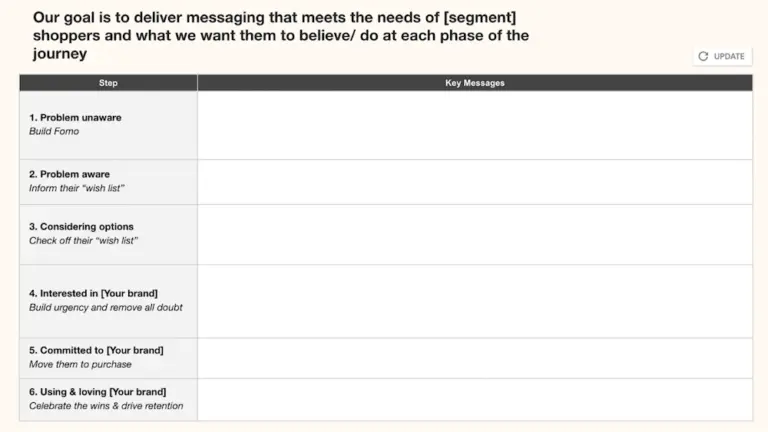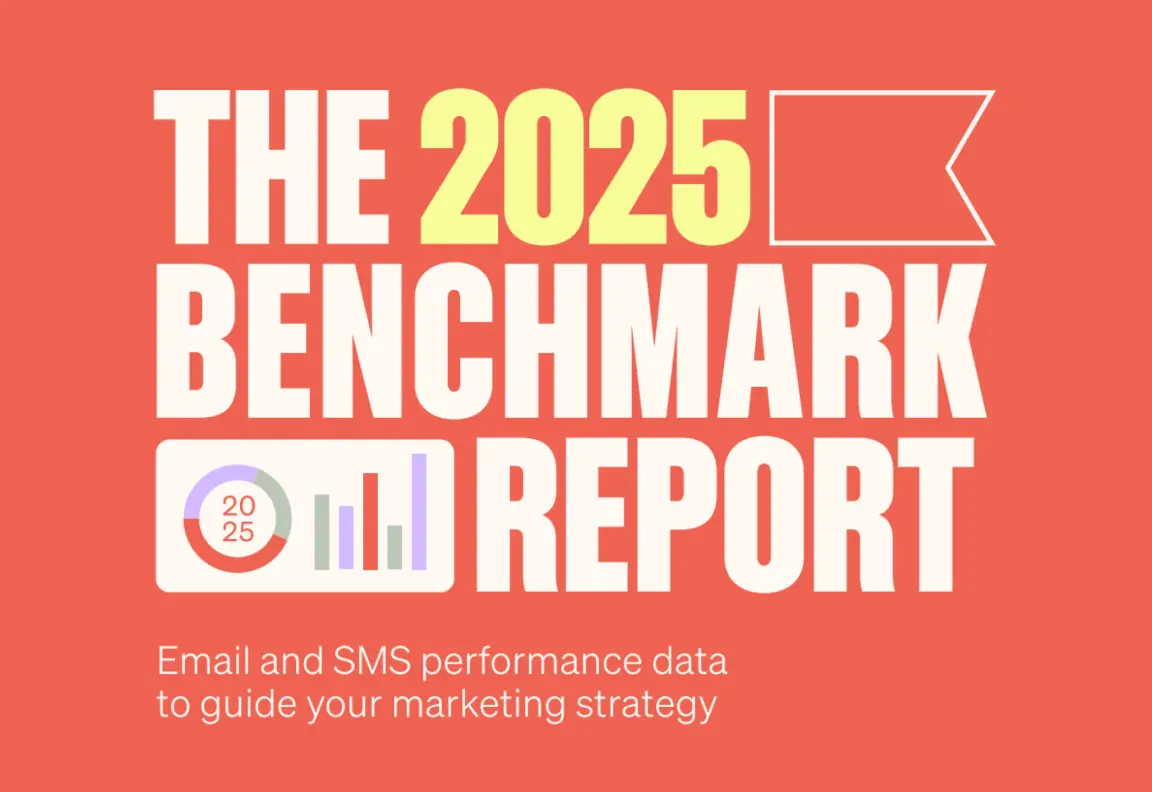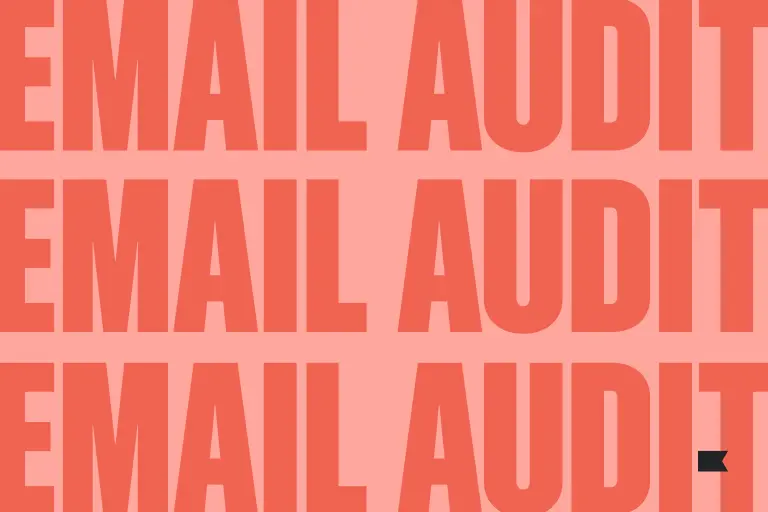How to build an email marketing strategy that elevates the customer experience
Sara Du doesn’t believe in winging it with email marketing.
“Email marketing isn’t just about messaging your customers whenever you want,” says Du, co-founder and CEO of Alloy. “It’s about thoughtful, intentional, value-packed messages that reach customers at the right time.”
“Without a list growth strategy, for instance, you have no idea what your goals are,” Du explains. “You’ll find yourself throwing things at a wall, hoping they stick.”
Email marketing isn’t just about messaging your customers whenever you want. It’s about thoughtful, intentional, value-packed messages that reach customers at the right time.
An effective email marketing strategy is important for creating relevant content that can persuade your audiences to engage with your brand and eventually purchase your products. Your email strategy involves getting to know your audiences so you can segment them properly based on behavioral and lifestyle data—the knowledge of which can not only bring in revenue from email, but also carry over to other marketing channels.
So what does a thoughtful, intentional, and valued-packed email strategy look like? Hint: there’s a big difference between “good” and “great,” here.
According to Klaviyo’s latest email marketing benchmarks, email campaign order rates are more than 5x higher for the top 10% of campaigns across both email and SMS—and revenue per recipient (RPR) for the top 10% of campaigns is even higher at 7x the average.
And while campaigns drive plenty of purchases, no email marketing strategy is complete without automated flows. Our benchmarks data reveals that automations like abandoned cart and post-purchase messages generate up to 30x more RPR than campaigns because they’re so timely and targeted.
It just goes to show: while general email marketing best practices are a good place to start, email marketing strategy is not one-size-fits-all. To figure out what’s right for your brand, follow these 9 steps to set yourself on the right path.
1. Conduct an audience and content audit
To create smart, persuasive email content, start by understanding your core audiences’ lifestyles, challenges, and pain points. An audit teaches you everything you need to know about your product, market, and customers to send relevant emails.
Customer interviews, market research, and conversations with your product development and customer service teams are all essential components of a sound audit.

When you’ve collected enough quantitative and qualitative data, compare your findings to the content you’ve produced so far: How does your content serve or not serve your audience? How can you make it better so that it solves problems?
Here are some tools to help you conduct your audit:
How well does your email performance stack up against your peers in your industry?
Use tools like Klaviyo’s email template library, Really Good Emails, or MailCharts to see what good content looks like. Do you notice any themes? Does anything spark ideas for how you can improve?
How do your subscribers and customers interact with you online? If you haven’t yet started collecting behavioral data, use Klaviyo’s customer-first marketing guide to get started.
Build clear brand narratives for each stage of your funnel so you and your team can easily give purpose to every message and touchpoint.
2. Set goals that align with your overall brand goals
Your email marketing goals will be different depending on your business model, audience, cash flow, and seasonality, but a few common examples of email strategy goals include:
- Email list growth: for when you’re just starting out with new subscribers
- Engagement: for when you need more zero- and first-party data for list segmentation
- Revenue: for when you have a solid base of email subscribers who have indicated they’re ready to buy
- Fewer cart abandonments: for when a lot of people are visiting your site and almost buying
- Increased customer lifetime value (CLTV): for when you’re starting to see more loyal customers
The most important thing to know about goals is that you need enough data to determine whether or not they’re working. Your email marketing strategy should walk a fine line between sticking with a plan long enough to live out its potential and changing that goal at the right time, only when you’ve tested enough to know it’s time for a change.
3. Choose the right B2C tools
An email marketing platform or email service provider (ESP) is a tool used to create and send emails to a specified list of email addresses.
But while most of today’s email marketing tools have built-in features that allow you to use templates, create email marketing campaigns, and automate email flows, that kind of functionality won’t cut it anymore for the modern B2C marketer.
You need—and deserve—more.
When deciding which tech will power your email marketing strategy, look for a platform that helps you manage the entire customer lifecycle seamlessly, from marketing to analytics to customer service.
In addition to the table stakes email capabilities we listed above, your marketing tech should:
- Unify fragmented data.
- Transform it into actionable insights.
- Orchestrate real-time, 1:1 personalization across every touchpoint.
And it should do it all without adding complexity, unnecessary costs, or working hours for your team.
4. Build an email list
Email marketing is alive and well because it’s where your brand gets attention after getting permission. Your email list is one of your marketing team’s most valuable assets because you own it—and no algorithm switch-up can take that away from you.
Encourage people to opt in to your email list with sign-up forms by offering incentives like coupon codes, free shipping, or access to gated content in exchange for email addresses.
5. Define your audiences so you can personalize for them
If you’re selling to everyone, you’re selling to no one. The more precisely you define your target audience using demographic, geographic, psychographic, and behavioral email segmentation, the better results you can expect from your email marketing efforts.
“Think about what kind of information you need to personalize your emails,” suggests Carson McComas, CEO of FuelMade. “That’s what you should be asking customers for. Skin concerns, pregnancy stages, shoe sizes, exercise goals—you get the idea. Get personal with customers.”
6. Tailor emails to each stage of the customer journey
Different stages of the customer journey require different email approaches. Dissecting each stage and defining what types of emails you should send and when will give you a clear picture of the overall email experience.

“Once you have systems for collecting data (quizzes, pop-ups with checkboxes, etc.),” says McComas, “focus on creating emails with tailored content based on each type of customer and their unique needs. This includes email flows and email newsletters with relevant product recommendations, education, and other dynamic content.”
Here’s a crash course on what that might look like at different points of the customer journey:
Email campaigns
An email campaign is a one-off email you send to your whole list, or a specific segment of your list. According to Klaviyo benchmarks, email campaigns convert at a rate of .08% and generate $0.10 in RPR, on average—but remember, the top 10% of campaigns drive those numbers way up, to .44% and $0.97, respectively.
Depending on what you’re trying to get your customers to do and where they are in the customer journey, your email campaign might be:
- Promotional: Designed to promote a new product, offer, or opportunity, a promotional campaign might be most relevant for customers who recently bought similar or complementary items.
- Informational: Designed to educate your customers about your products, brand, or mission, an informational campaign might be most relevant for recent subscribers who haven’t yet made a purchase.
- Retention-focused: Designed to re-engage customers, retention-focused campaigns might be most relevant for customers who haven’t engaged with your marketing efforts in a certain amount of time.
Email automations
An email automation is triggered automatically when a customer performs a specific action, such as abandoning a cart or placing an order. The beauty of marketing automations like these is that they respond in real time to customer behavior, making them inherently more relevant and personalized.
Email flows can cover all stages of the customer journey, but a few of the most common include:
- Welcome flows: Sent when a new subscriber signs up for your email list, welcome flows are the second-highest converting flow (1.97% average placed order rate), according to Klaviyo benchmarks.
- Abandoned cart flows: Sent when a customer adds a product to their cart on your website but doesn’t proceed to check-out, abandoned cart flows drive the highest average RPR ($3.07) and highest average placed order rate (2.68%) of all flows, according to Klaviyo benchmarks.
- Browse abandonment flows: Sent at a lower-intent stage—when someone leaves your site without adding something to their cart—browse abandonment flows still have an impressive average click rate (4.74%), according to Klaviyo benchmarks.
- Post-purchase flows: Sent at various points after a customer makes a purchase, post-purchase flows have the highest average flow open rate (59.77%) but the lowest average placed order rate (0.48%), according to Klaviyo benchmarks.
7. Design your emails and determine send frequency
Crafting the perfect email is an art as much as it is a science. Your email design—format, fonts, colors, and text sizes—is how you stand out in an inbox teeming with other emails, so it’s okay to spend a good amount of time on basic email design best practices.
You’ll also need to consider frequency, or how often you send different types of emails. While email marketing automations send based on behavioral triggers, you may send other campaigns and newsletters on a set schedule that varies based on season.
We recommend stress testing frequency by sending weekly, bi-weekly, and monthly, and keeping an eye on unsubscribe rates and other metrics to see whether you’re sending too much. On the other hand, if you’re seeing high engagement rates, you may be able to send more.
8. A/B test email elements one at a time
A/B testing is how you optimize your digital marketing strategy and understand how different audience segments respond to your content. Some basic examples of A/B tests for email include:
- Testing email subject lines for open rate performance
- Testing calls to action (CTAs) for click rate performance
- Testing images and layouts for click rate performance
The golden rule of A/B testing is to test only one element at a time. If you’re testing subject lines, don’t test CTAs at the same time—the double variable will skew your results, and you won’t know what’s responsible for an improvement or drop in performance.
With Klaviyo, you can customize your A/B test parameters by audience percentage and time. This means you can reserve certain portions of your segments for A/B testing and only send to the rest when you know which version performed best.
9. Track and monitor performance so you can make changes
What does it mean to monitor email performance? It means tracking the following key email metrics:
- Click rate
- Website and landing page visits
- Conversion rate
- RPR
- Deliverability rates
- Unsubscribe rate
- List growth rate
- Return on investment (ROI)
Regarding email open rates, keep in mind that Apple’s iOS 15 privacy features, launched in June 2021, allow Apple Mail users to block third parties from tracking email opens. Considering Apple owns 58% of email client market share, that means more than half of your brand’s open rate metrics don’t reflect how many people actually opened your email.
Klaviyo handles this by helping you identify which emails have been opened by Apple iOS users and separate them from the rest, so that you can still extrapolate learnings related to open rates from your data.
Your job here is to see what works and what doesn’t, and make improvements in your email marketing strategy based on those results.
“There’s a lot of value to unlock via email,” says McComas. “But without an intentional and consistent strategy in place, you’re only accessing maybe 20% of your brand’s potential on this channel.”




